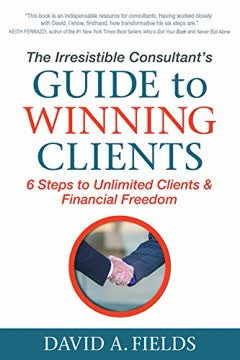Key Takeaways
1. Right-Side Up Thinking: Focus on Them, Not You
Consulting isn’t about YOU. It’s about THEM.
Invert the pyramid. Shift your focus from your own services and expertise to your prospects' problems, needs, and situations. This fundamental change in perspective is the key to attracting clients and growing your consulting practice.
Typical vs. Right-Side Up. Instead of worrying about what prospects think of you, worry about what prospects think about themselves. Instead of pushing approaches you're comfortable with, use approaches they pay attention to. Instead of marketing your capabilities, market their situation, their problems, their aspirations, and their potential wins.
Instant adoption. Start by examining the opening lines of your emails to prospects. Do they begin with "I" language or "You" language? Shift the focus to your prospects' needs, goals, and situations in all your communications.
2. Confidence Comes from Serving, Not Introspection
You boost your self-confidence by reflecting less on yourself and more on your targets’ problems and aspirations.
External validation. Instead of looking inward for confidence, seek external validation by focusing on your clients' problems and aspirations. Your belief in your value as a consultant comes from others, not from yourself.
Three-part confidence booster:
- Powerful Offering: Is there evidence that clients have purchased what you offer?
- Strong Capabilities: Is there any evidence that you have solved your clients’ problem?
- Proven Value: Is there any evidence that your clients value what you do?
Defeat negative self-talk. Recognize negative thoughts as delusions and choose not to interact with them. Like Nash in "A Beautiful Mind," acknowledge their presence but refuse to let them control your actions.
3. Fish Where the Fish Are: Target Awareness and Urgency
You aren’t fishing where the fish are.
Awareness and urgency. Focus your energy on prospects who are already aware they have the problem you solve and have an urgent desire to solve it now. This is a far easier place to win consulting business than trying to convince prospects they have a problem or create urgency where none exists.
Strategies for creating urgency:
- Highlight the consequences of inaction
- Compare to benchmarks
- Remove roadblocks
Exposing need. If prospects aren't aware of their problem, use a diagnostic tool that is low cost, low risk, and uses the prospect's own evidence to convince them.
4. The Four Rights: People, Problem, Solution, Time
If you want to open the floodgates and turn a revenue trickle into a stream or even a raging torrent, you need to identify “The Four Rights.”
The Four Rights. To maximize your business development efforts, focus on:
- The Right People
- The Right Problem
- The Right Solution
- The Right Time
Reachability is key. The Right People are those you can engage in conversation quickly. Start with your current contact list and prioritize those who will respond to your outreach.
Big enough, urgent enough, high enough. The Right People have a problem that is big enough, a desire to solve it that is urgent enough, and signing authority that is high enough.
5. Simple, Relevant Solutions Trump Breakthroughs
Consultants should never focus on differentiation.
Reliability over differentiation. Clients aren't looking for different; they're looking for a solution they can rely on. Focus on delivering results and building trust, not on trying to be unique or innovative.
The Right Solution criteria:
- Simple
- Easily communicated
- Highly relevant
- Efficient
Solve the client's problem. The Right Solution is straightforward and focused squarely on delivering results for the prospect's specific problem or aspiration.
6. Craft a Fishing Line: Precise Target, Defined Issue
If you want to be a great angler, you need a strong Fishing Line.
The Fishing Line. Create a ten-to-fifteen word statement that succinctly and precisely describes your target and the issue you address. This statement should be easy to remember, allow prospects to self-select, and be easily repeated to others.
Fishing Line vs. Elevator Pitch. A Fishing Line is not a thirty-second commercial meant to win business. Instead, it's a short phrase designed to create conversations.
Common Fishing Line mistakes:
- No problem
- Too broad a problem
- Too many problems or targets
- Too long
- Too broad a target
- Too approach-oriented
- Too much justification
7. Visibility Requires Relevant, High-Value Exposure
Most struggling consultants don’t have a VISIBILITY problem, they have an IMPACT problem.
Visibility vs. Exposure. Exposure is just getting your name out into the world, while visibility occurs when prospects start to pay attention. To become highly visible, you need exposure, relevance, and high-value.
Five Marketing Musts:
- Writing
- Speaking
- Trade Associations
- Digital Presence
- Networking
Prioritize consistency. Choose at least two of the Five Marketing Musts and commit to tackling them consistently. If none of them feels like your cup of tea, you’re going to find yourself in a world of financial hurt.
8. Trade Associations: A Goldmine for Consultants
I’ve seen more consultants generate clients through active, trade association participation than any other marketing approach.
Focus and participation. Trade associations are inherently focused, and the best ones are specialized. Join a committee or two, take on a project, and participate on advisory boards.
Consistency and longevity. Plan on at least a three-year commitment to a trade association. The value of your participation will multiply over time as you build relationships and establish yourself as a trusted resource.
Don't pitch. Be perceived as a member committed to helping, not a salesperson in search of business. Focus on what the trade association needs, not what it can do for you.
9. Relationships = Wealth: Nurture, Don't Just Connect
The more, strong, vibrant, enriching relationships a person has, the wealthier he is.
Relationships are everything. You can win consulting business without marketing, optimizing your impact, or knowing how to put together a compelling proposal, but you can't win without relationships. No executive is going to hand you a large sum of money without having some sort of one-on-one relationship with you.
The Master Strategy. Your most reliable and productive source of new relationships (and clients) should be introductions and referrals from existing clients.
The Transfer of Interest. Use this technique to ask for introductions by focusing on interesting connections rather than sales opportunities. Ask, “Who have you run into recently who’s intriguing, creating change or shaking things up?”
10. The Turn: Gracefully Shift to Business
When social and market norms collide, trouble sets in.
The Turn. Use this carefully constructed script to protect the warm, relationship norms while creating a space for market norms: "Would you be open to a separate conversation where we talk about your business, and explore whether my firm can help you achieve your goals?"
Key components:
- Separation (i.e., talking about business in a different conversation)
- Agency (i.e., giving your prospect the choice)
When to use The Turn. Employ The Turn after you've clearly demonstrated Right-Side Up thinking and when your prospect raises a specific issue that meshes with your offerings.
11. Trust is Paramount: The Six Pillars of Success
Clients choose the consultant they trust most.
Six Pillars of Consulting Success:
- Know
- Like
- Trust
- Need
- Want
- Value
The Trust Triangle. Trust is built on three key points: you're considering me and have my best interests in mind, not just your own; you're going to help me by solving my problem; you're not going to hurt me by screwing up or making me look bad.
Build trust. Be trustworthy, build solid relationships, listen actively, and provide credibility boosters, risk reducers, project approaches, terms, and structures that address all three points of trust.
12. The Context Discussion: Uncover Needs, Build Trust
The heart and soul of Becoming the Obvious Choice is what I call the Context Discussion.
The Context Discussion. This carefully constructed approach to discovery is the single, most important conversation paving the way to unlimited clients and financial freedom.
Six Topics:
- Situation
- Desired Outcomes
- Indicators of Success
- Perceived Risks and Concerns
- Value
- Parameters
Platinum Rule. The Context Discussion must be conducted with the decision maker or decision makers.
Last updated:
FAQ
1. What is "The Irresistible Consultant's Guide to Winning Clients" by David A. Fields about?
- Six-Step Client Acquisition System: The book presents a practical, step-by-step process for independent consultants and consulting firm leaders to consistently attract and win clients.
- Focus on Relationships, Not Selling: Fields emphasizes that consulting success is built on relationships and understanding client needs, rather than traditional sales tactics.
- Actionable Tools and Scripts: The guide is filled with real-world examples, scripts, templates, and exercises to help consultants implement the advice immediately.
- Mindset Shift: A core theme is shifting from self-focused to client-focused thinking, which Fields calls "Right-Side Up" thinking.
- Proven Framework: The methods are based on Fields’ own consulting experience and his work coaching hundreds of consultants, making the advice both field-tested and widely applicable.
2. Why should I read "The Irresistible Consultant's Guide to Winning Clients" by David A. Fields?
- Practical, No-Nonsense Advice: The book avoids academic theory and instead offers actionable, real-world strategies that consultants can use right away.
- Addresses Common Consultant Struggles: It tackles issues like lack of confidence, difficulty in finding clients, and challenges in closing deals.
- Step-by-Step Roadmap: Fields breaks down the client acquisition process into six clear, manageable steps, making it easy to follow and implement.
- Focus on Financial Freedom: The ultimate goal is to help consultants build a steady stream of clients and achieve financial independence.
- Endorsed by Industry Leaders: The book features testimonials from successful consulting firm CEOs and thought leaders, attesting to its effectiveness.
3. What are the six steps to winning clients in David A. Fields' method?
- Step 1: Think "Right-Side Up": Shift your mindset from focusing on yourself to focusing on your clients’ needs, problems, and aspirations.
- Step 2: Maximize Impact: Identify the Right People, the Right Problem, and the Right Solution, then craft a compelling "Fishing Line" to attract prospects.
- Step 3: Build Visibility: Become known to your target market through writing, speaking, trade associations, digital presence, and networking.
- Step 4: Connect, Connect, Connect: Create, nurture, and leverage relationships to generate opportunities and referrals.
- Step 5: Become the Obvious Choice: Use the "Context Discussion" to deeply understand client needs and position yourself as the best solution.
- Step 6: Propose, Negotiate & Close: Write winning proposals, handle objections, negotiate effectively, and close deals with confidence.
4. What is "Right-Side Up Thinking" in "The Irresistible Consultant's Guide to Winning Clients" and why is it important?
- Client-Focused Mindset: "Right-Side Up Thinking" means putting the client’s needs, problems, and aspirations at the center of all your business development efforts.
- Contrast with Consultant-Think: Instead of worrying about your own capabilities or selling yourself, focus on what the client cares about and how you can help them.
- Drives All Six Steps: This mindset shift is the foundation for every other step in Fields’ method, from outreach to proposal writing.
- Builds Trust and Relevance: Clients are more likely to engage with consultants who demonstrate genuine understanding and concern for their situation.
- Instantly Actionable: Even small changes, like using "you" language in emails, can make a big difference in client engagement.
5. How does David A. Fields recommend consultants identify and target the right clients and problems?
- Fish Where the Fish Are: Focus your efforts on prospects who are aware of their problem and have an urgent desire to solve it, rather than trying to create demand where none exists.
- The Four Rights: Identify the Right People (reachable decision-makers), the Right Problem (pervasive, urgent, expensive), the Right Solution (simple, relevant, efficient), and the Right Time (when urgency is high).
- Use the Problemeter: Conduct research and conversations to list, rate, and select the most valuable problems to solve for your target market.
- Leverage Existing Networks: Start with people you can already reach, rather than chasing idealized avatars or unreachable prospects.
- Narrow Your Focus: Specialize in a specific problem for a specific audience to increase relevance and visibility.
6. What is a "Fishing Line" and how does it help consultants win clients according to David A. Fields?
- Concise Value Statement: A "Fishing Line" is a 10-15 word phrase that clearly states your target market and the specific problem you solve, without describing your solution.
- Sparks Conversations: Its purpose is to prompt prospects to say, "That’s me, tell me more," leading to deeper discussions.
- Memorable and Repeatable: A strong Fishing Line is easy for both you and others to remember and share, increasing word-of-mouth referrals.
- Avoids Common Mistakes: Fields warns against making it too broad, too long, or focused on your approach rather than the client’s issue.
- Essential for Visibility: It’s a key tool for building awareness and ensuring you’re top-of-mind when prospects need help.
7. What are the Five Marketing Musts for building visibility in "The Irresistible Consultant's Guide to Winning Clients"?
- Writing: Publish articles, blog posts, or books to demonstrate expertise and stay top-of-mind with prospects.
- Speaking: Deliver talks or webinars to targeted audiences, positioning yourself as an authority and generating leads.
- Trade Associations: Actively participate in relevant industry groups to build relationships and credibility.
- Digital Presence: Maintain a professional website, create valuable online content, and use social media strategically to be findable and relevant.
- Networking: Consistently connect with and expand your network of decision-makers and influencers to generate referrals and opportunities.
8. How does David A. Fields suggest consultants create, nurture, and leverage relationships to win more clients?
- Ask for Introductions: Use the "Transfer of Interest" technique to request introductions to interesting people, not just potential buyers.
- Segment Your Network: Identify your "network core" (A1s, B1s, A2s) and focus your nurturing efforts on these high-potential contacts.
- Regular, Right-Side Up Outreach: Stay in touch through personalized emails, phone calls, and occasional in-person meetings, focusing on the other person’s needs.
- Add Value and Be Likable: Share relevant information, make helpful introductions, and be genuinely interested in your contacts’ success.
- Use "The Turn": When a relationship is strong, gracefully shift the conversation to business opportunities by asking for a separate, explicit discussion about working together.
9. What is the "Context Discussion" and how does it help consultants become the obvious choice for clients?
- Structured Discovery Conversation: The Context Discussion is a six-topic conversation covering Situation, Desired Outcomes, Indicators of Success, Perceived Risks, Value, and Parameters.
- Deep Understanding: By thoroughly exploring these areas, you demonstrate a deep grasp of the client’s needs and priorities.
- Builds Trust and Differentiation: Clients feel heard and understood, making you stand out from competitors who jump straight to solutions or proposals.
- Sets Up the Proposal: The insights gained form the basis of your proposal, ensuring it’s tailored and relevant.
- Reduces Objections: Addressing risks and value up front minimizes surprises and resistance during negotiation.
10. How does David A. Fields recommend structuring proposals and pricing consulting projects?
- Two-Stage Proposal Process: First, confirm agreement on the Context Document; then, present a proposal with clear alternatives.
- Six-Part Proposal Structure: Include Context, Approaches (with alternatives), Logistics, Terms (fees and conditions), Signatures, and Support Material.
- Focus on Outcomes, Not Tasks: Emphasize the client’s desired results rather than your methodology or credentials.
- Offer Alternatives: Present multiple options (e.g., different scopes or fee structures) to facilitate discussion and increase your chances of closing.
- Value-Based Pricing: Whenever possible, set fees based on the value to the client, aiming for a 7:1 return on investment, and use hybrid structures (fixed plus success fees) when appropriate.
11. What are David A. Fields’ best practices for negotiating and closing consulting deals?
- Always Deal with Decision Makers: Ensure you’re negotiating with the person who has authority to approve the project.
- Use Strategic Delay: Before responding to objections, ask "What else?" to surface all concerns before addressing them.
- Seek to Understand: Clarify the reasoning behind each objection to address the real issues.
- Defend the Prospect’s Point of View: Acknowledge and validate their concerns before presenting your rationale or alternatives.
- Make Smart Trades: Look for win-win adjustments (e.g., timeline, deliverables, payment terms) rather than simply conceding on price.
12. What are the key takeaways and best quotes from "The Irresistible Consultant's Guide to Winning Clients" by David A. Fields?
- Consulting Isn’t About You: "Consulting isn’t about YOU. It’s about THEM." This core idea underpins the entire book and is the foundation of Right-Side Up thinking.
- Relationships = Wealth: "The more, strong, vibrant, enriching relationships a person has, the wealthier he is." Fields redefines success in consulting as the strength of your relationships.
- Fish Where the Fish Are: Focus your efforts on prospects who are aware of and eager to solve the problems you address, rather than trying to create demand.
- Discovery is Key: "The consultant who discovers better will understand the client better and know exactly how to grab the golden ring."
- Closing is the Result, Not the Action: "Closing isn’t something you do. Closing is the result of everything you’ve already done."
- Actionable, Not Theoretical
Review Summary
The Irresistible Consultant's Guide to Winning Clients receives high praise from readers, with an average rating of 4.45 out of 5. Reviewers consistently highlight its practical advice, client-focused approach, and step-by-step guidance for both new and experienced consultants. Many appreciate the book's emphasis on building relationships, identifying niches, and developing effective engagement strategies. Readers find the content actionable, insightful, and valuable for growing their consulting practices. Some mention specific techniques learned, such as conducting discovery meetings and addressing objections. Overall, it's considered a must-read for anyone in or considering consulting.
Similar Books
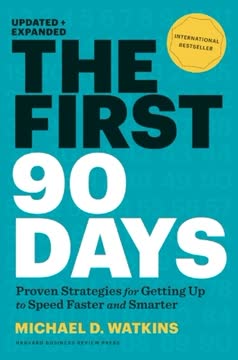
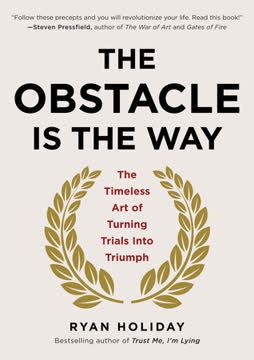

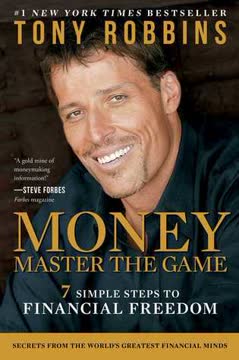
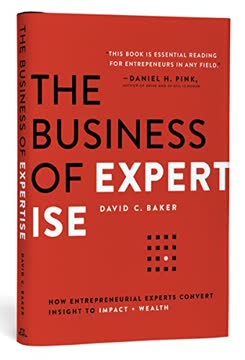
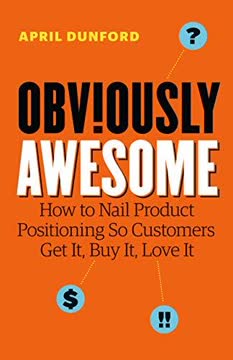


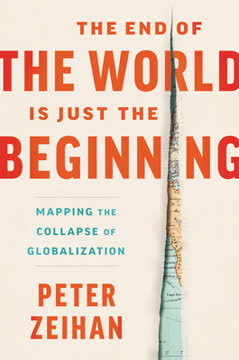
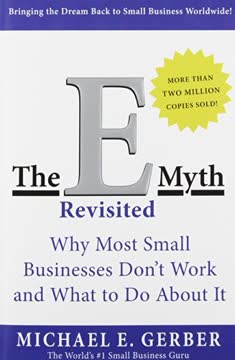
Download PDF
Download EPUB
.epub digital book format is ideal for reading ebooks on phones, tablets, and e-readers.
